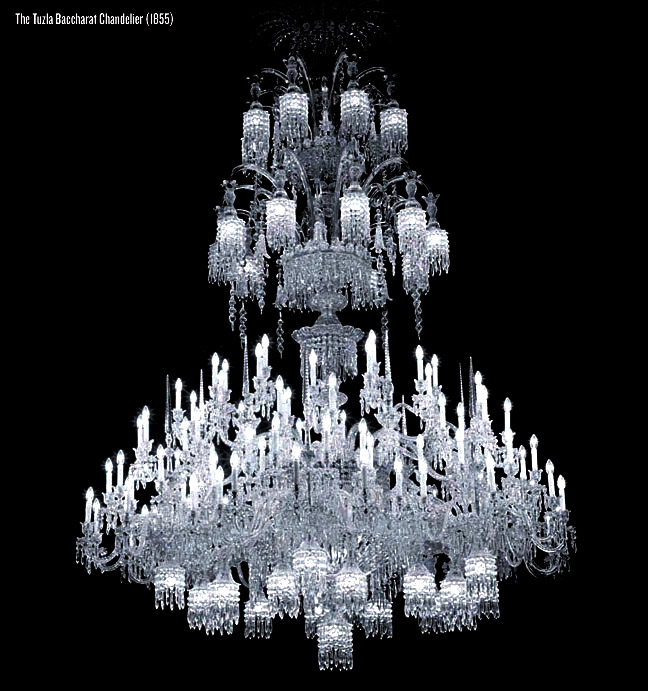Baccarat Crystal is a manufacturer of fine crystal glassware located in Baccarat, France (approximately 300km east-southeast of Paris.) The company owns two museums: the Musée Baccarat in Baccarat, and the Galerie Musée Baccarat, on the Place des États-Unis in Paris. Groupe du Louvre is the majority shareholder of the company.
In 1764 King Louis XV of France gave permission to found a glassworks in the town of Baccarat in the Lorraine region in eastern France to Prince Bishop Cardinal Louis-Joseph de Laval-Montmoreny. Production consisted of window panes, mirrors and stemware until 1816 when the first crystal oven went into operation. By that time over 3000 workers were employed at the site. Baccarat received its first royal commission in 1823. This began a lengthy line of commissions for royalty and heads of state throughout the world. In 1855 Baccarat won its first gold medal at the World’s Fair in Paris.
Baccarat first began marking its work with a registered mark in 1860. The mark was a label affixed to the bottom of the work. In the period 1846-1849 Baccarat signed some of their high quality glass millefiori paperweights with the letter B and the year date in a composite cane. A special paperweight dated 1853 was found under the cornerstone of a bomb damaged church in Baccarat when construction recommenced after World War 2. The crystal production expanded its scope throughout this period, and Baccarat built a worldwide reputation for making quality stemware, chandeliers, barware, and perfume bottles.
The Imperial Era ended in 1867 with the defeat of Napoléon III. Influences outside of France began to have a stronger influence on Baccarat’s work during this era, particularly imports from Japan. The world’s largest chandelier and a staircase lined with a Baccarat crystal balustrade adorn the Dolmabahçe Palace in Istanbul. Strong growth continued in Asia for Baccarat. One of the strongest production areas for Baccarat was perfume bottles, and by 1907 production was over 4000 bottles per day. In 1936 Baccarat began marking all of its works via acid or sandblasting.
Baccarat created an American subsidiary in 1948 in New York City. As of 2010 there are stores in Chicago, Costa Mesa, Houston, New York, San Francisco, Palm Desert, and Las Vegas. A retrospective was held in 1964 at the Louvre Museum to celebrate the 200th anniversary of the crystal works. In 1993, Baccarat began making jewelry and in 1997 the company expanded into perfume. In 2003, Baccarat relocated to 11, Place des Etats-Unis in Paris.
A 2010 Baccarat chandelier costs between $35,000 to $60,000. But Baccarat antiques are a quite a different story. For example, the “Tuzla” Baccarat chandlier is approximately 12 feet in height and 8 1/2 feet in diameter unabashedly counts over 9000 crystals, 157 lights and weighs over 1,400 pounds. It was originally designed for the 1855 World’s Fair (the same fair where they won their first gold medal) held on the Champs-Elysées and has been recreated for palaces around the world, including those of the Sultan of Turkey and the Shah of Persia. The original Tuzla sold in 2009 for $1.1 million.


